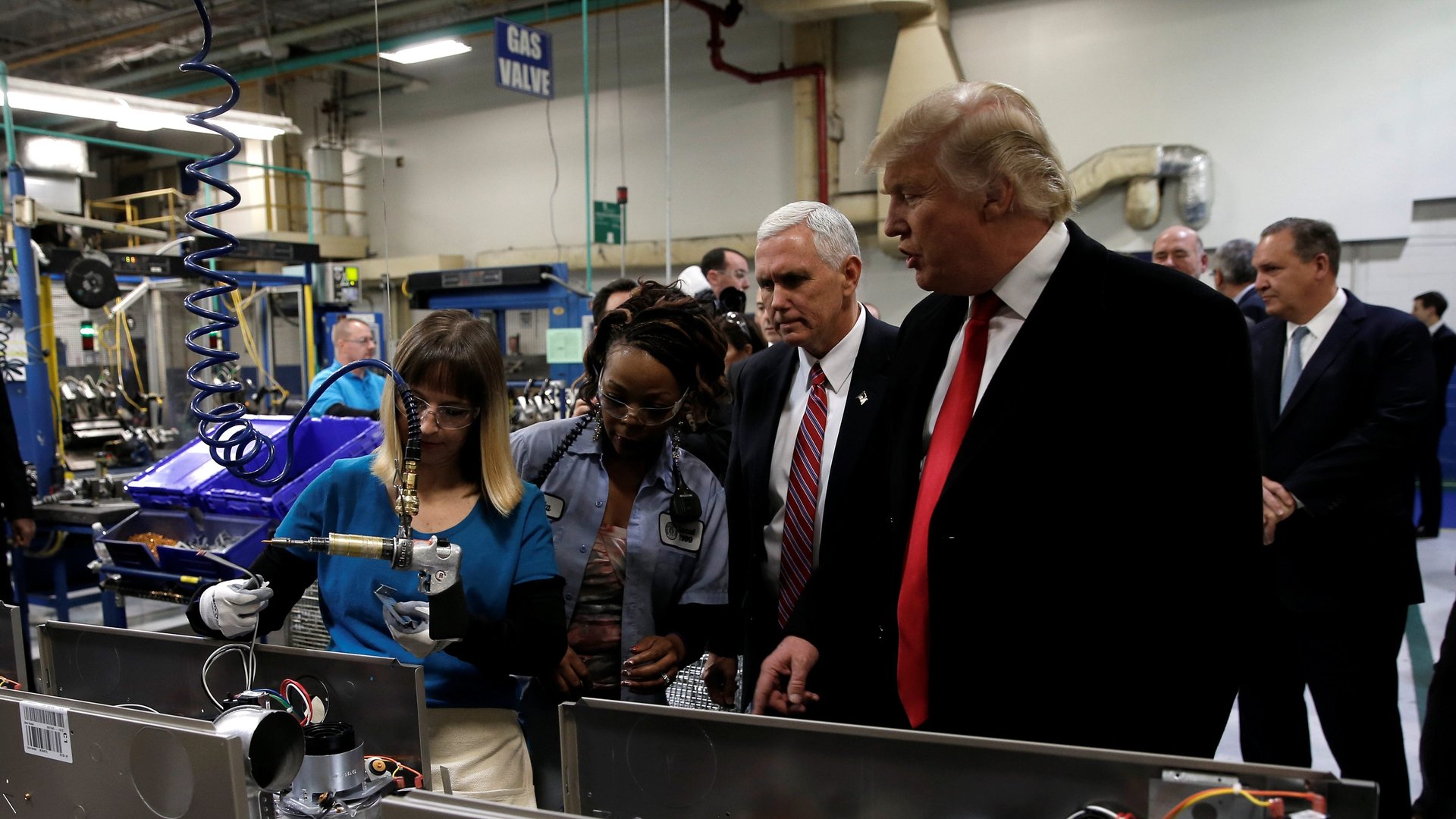The trade-ravaged areas that voted for Trump have the most to lose from Trump’s anti-trade agenda
As billed during the presidential campaign, Donald Trump has been playing hardball on trade. He killed the Trans-Pacific Partnership, a 12-nation trade agreement, during his first week in office; he’s pressured South Korea into agreeing to change its trade deal with the US to be more favorable to the latter; and last week, his administration introduced several controversial proposals to renegotiate the North American Free Trade Agreement, or Nafta, that threaten to derail talks.


As billed during the presidential campaign, Donald Trump has been playing hardball on trade. He killed the Trans-Pacific Partnership, a 12-nation trade agreement, during his first week in office; he’s pressured South Korea into agreeing to change its trade deal with the US to be more favorable to the latter; and last week, his administration introduced several controversial proposals to renegotiate the North American Free Trade Agreement, or Nafta, that threaten to derail talks.
That’s the kind of protectionist attitude desired by Trump voters from trade-ravaged areas. As a candidate, Trump identified the very real pain that globalization has inflicted on communities in the American heartland, which have lost factories and jobs to competition from abroad. He exploited their frustration by essentially promising them to turn back time—as president, he would make America great again.
The strategy worked. On average, cities and towns with higher numbers of workers displaced by trade were more likely to have voted for Trump, according to a Brookings Institution analysis. The study, which is based on data from micro and metropolitan areas, looked at the share of workers certified to get aid from the federal Trade Adjustment Assistance, or TAA, program, which was created to help laid-off employees find other jobs.
But Trump and those who support his anti-trade agenda have ignored that globalization and access to global markets have also kept other plants in those same locales open. Despite being harder hit by trade, the areas that went for Trump remain more dependent on trade than those won by Democrats.
“That doesn’t mean that they weren’t really challenged by globalization; they were,” says Joseph Parilla, a fellow at Brookings who has studied the effect on trade in American communities. “But the remaining economic base is still pretty trade-dependent. We shouldn’t try to save these communities by cutting them off the very sources of jobs that they’re still dependent on.”
Take a look at Valley, a city of 10,000 in central Alabama. The city’s main industry, textiles, has been squashed by competition from Asia. Roughly 14 of every 1,000 workers have been certified for the TAA program. But exports from those companies that continue to operate there still make up 20% of the economy. Take that away, and there will be even more displaced workers.
And these communities don’t only depend on selling abroad. They also need to import raw materials and parts in order to make their products. That kind of intermediate good trade is particularly strong under Nafta, which makes it possible for stuff such as car mirrors and seats to crisscross the border several times before ending up in a finished car. Without those imports, exports will become more expensive and difficult to make.
For example, big swaths of vice president Mike Pence’s state, Indiana, are heavily dependent on global markets, including four metro areas and eight smaller communities in which exports account for 25% or more of the economy, according to Brookings. In 2015, the Republican state bought $8.5 billion worth of such intermediate goods from Mexico and Canada—about a third of all the intermediate goods it imported from around the world.
If producers have to pay tariffs on that kind of trade, they might choose to concentrate more of their operations in a single country, one unlikely to be the US. A study of the auto industry by Boston Consulting Group calculated that ending Nafta would raise the cost of a car by $1,200. That’s too little to warrant moving a factory from Mexico to the US, it calculated, but big enough for carmakers to adapt, potentially, by using fewer US-made features, such as rear cameras. The study’s estimated toll for killing Nafta: 50,000 American jobs.